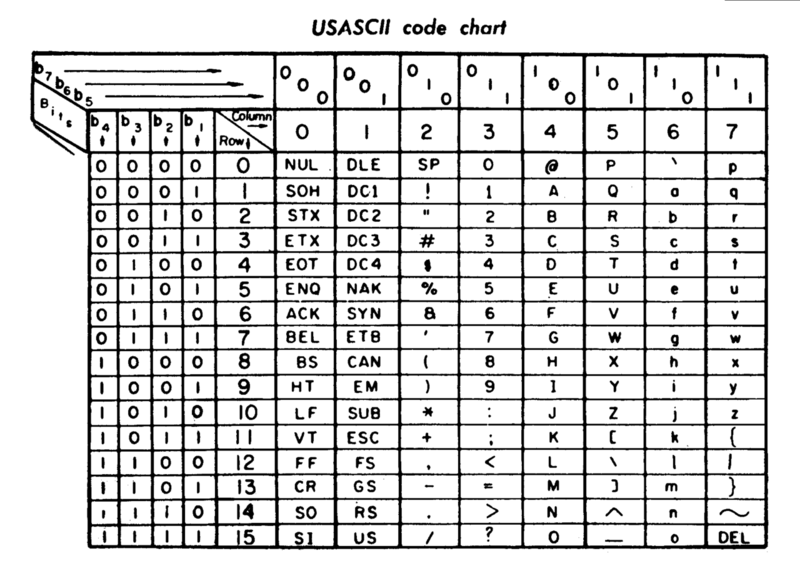User:Manetta/semantic-systems/language-technologies: Difference between revisions
(Created page with "<div style="width:75%;"> __NOTOC__ =semantic systems= File:none.jpg<br> <small>none</small> ==index== * ascii * unicode ==notes== ==related== -----------------------...") |
No edit summary |
||
| (2 intermediate revisions by the same user not shown) | |||
| Line 1: | Line 1: | ||
<div style="width: | <div style="width:100%;max-width:800px;"> | ||
__NOTOC__ | __NOTOC__ | ||
= | =language technologies= | ||
[[File: | [[File:ASCII Code Chart-Quick ref card.png|800px]]<br> | ||
<small> | <small>ASCII Code Chart, scanner copied from the material delivered with TermiNet 300 impact type printer with Keyboard, February 1972, General Electric Data communication Product Dept., Waynesboro VA. (from: wikicommons)</small> | ||
==index== | ==index== | ||
* | * ASCII (American Standard Code for Information Interchange) | ||
* unicode | * unicode | ||
* Controlled natural languages (CNLs) → are subsets of natural languages that are obtained by restricting the grammar and vocabulary in order to reduce or eliminate ambiguity and complexity. Traditionally, controlled languages fall into two major types: those that improve readability for human readers (e.g. non-native speakers), and those that enable reliable automatic semantic analysis of the language. | |||
==notes== | ==notes== | ||
Latest revision as of 22:01, 25 November 2015
language technologies

ASCII Code Chart, scanner copied from the material delivered with TermiNet 300 impact type printer with Keyboard, February 1972, General Electric Data communication Product Dept., Waynesboro VA. (from: wikicommons)
index
- ASCII (American Standard Code for Information Interchange)
- unicode
- Controlled natural languages (CNLs) → are subsets of natural languages that are obtained by restricting the grammar and vocabulary in order to reduce or eliminate ambiguity and complexity. Traditionally, controlled languages fall into two major types: those that improve readability for human readers (e.g. non-native speakers), and those that enable reliable automatic semantic analysis of the language.
